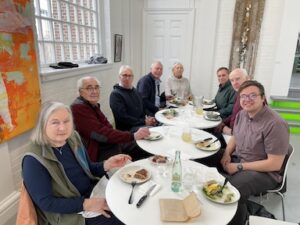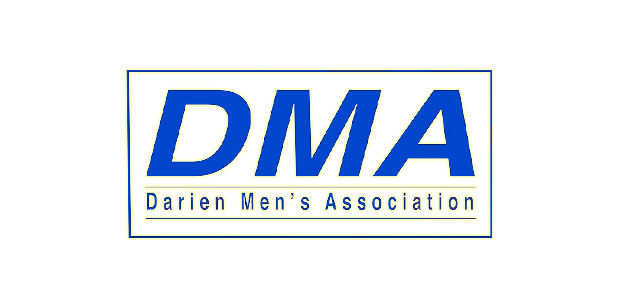Author: Webmaster (Page 13 of 92)
URBAN HIKE
NORWALK RIVER VALLEY TRAIL
NORWALK, CT
FEBRUARY 22, 2024
10:00 AM
The Norwalk River Valley Trail will eventually run from Calf Pasture Beach in Norwalk to Danbury. We hiked one finished section in Wilton last November. The trail is either paved or packed stone, is well marked and has limited ups and downs. The section of the trail we will be hiking on 2/15 runs for 3 miles north from the Maritime Museum in South Norwalk. This is an out and back hike so, depending on the weather and how we feel, we can turn around at any point and return to the start. We will probably hike for 4-5 miles in total which should take us 2 hours or less.
From the start at the front door of the Maritime Museum the trail takes us along the Norwalk River behind the SONO Mall, along the Metro North tracks, past the Norwalk Transfer Station and into the Pine Island Cemetery which dates from 1708 where the oldest surviving headstone dates from 1723. On north past the Lockwood-Mathews Mansion, through Union Park and along the river again up past Riverside Cemetery to the end at Kellogg Pond. On the return we will pass through Oyster Shell Park which has a commanding view over the river out to the sound. We will have an optional lunch at Mamma Bella Cucina near the museum.
DIRECTIONS: Park in the Maritime Center Garage on N. Water Street which is directly across from the Center. The restaurant is in the garage building. Bring friends and family and dogs on a leash are allowed.
CONTACT: Dave McCollum
Recap:
 A group of 22 DMA hikers and friends braved a chilly but pleasant day traversing a completed section of the future trail from Norwalk to Danbury that begins at the Maritime Aquarium and runs north for 3 miles to Broad Street. Our group only went up as far as Riverside Cemetery, a distance of 2.2 miles, before returning back along the same path to the Aquarium. We were joined by Tanner Thompson, a Norwalk resident who is planning a new trail from Norwalk to Greenwich. Tanner is also involved in Norwalk affairs and was able to provide interesting commentary on many aspects of the history and state of the NRVT.
A group of 22 DMA hikers and friends braved a chilly but pleasant day traversing a completed section of the future trail from Norwalk to Danbury that begins at the Maritime Aquarium and runs north for 3 miles to Broad Street. Our group only went up as far as Riverside Cemetery, a distance of 2.2 miles, before returning back along the same path to the Aquarium. We were joined by Tanner Thompson, a Norwalk resident who is planning a new trail from Norwalk to Greenwich. Tanner is also involved in Norwalk affairs and was able to provide interesting commentary on many aspects of the history and state of the NRVT.
This section of the NRVT runs along the Norwalk River and passes through Pine Island Cemetery, which dates from 1708, past the Lockwood-Matthews Mansion and on up past Union Park to Riverside Cemetery. 
Because it was an out and back hike, some hikers turned around at various points and headed back to the Aquarium, tailoring their hike to the distance that was comfortable for them. Fourteen of us made the entire trip and eight stopped for lunch on the way back at The Norwalk Art Space Café at 455 West Avenue for lunch. We were joined by one non-hiker who came to lunch. The Art Space is in a repurposed church and features local art in addition to delicious food. After lunch, we resumed our hike back to the Aquarium.
This trail is an amazing amenity for all of Fairfield County to enjoy.
Dave McCollum
Robert Plunkett
 Anthony Martin Kwedar, age 86, passed away Tuesday, December 5, 2023
Anthony Martin Kwedar, age 86, passed away Tuesday, December 5, 2023
Tony was born at home in Baltimore, MD, on February 21, 1937, to the late John J. Kwedar and Albina O. Kwedar of Severna Park, MD.
Tony briefly served in the Air Force and graduated from Iona College.
Working as a Purchasing Agent for Lever Bros., he moved from Maryland to New York, where he settled in Darien, CT, with his beloved first wife, Miriam C. Walas (predeceased 2005). He later worked for Unilever and Lipton Tea.
He was dedicated to St. Johns Parish in Darien, where he was a member of the Joyful Praise, one of St. John’s choirs, under the direction of Frank Porretta, and many church activities, including their Community Garden, always helping those in need. He was an active member of the Darien Men’s Association and various Bridge Clubs and was a proud recorder of the scorebook in the PONS Bridge Club. He will be fondly remembered by family and friends as a caring and compassionate gentleman, with a delightful sense of humor.
He leaves behind a loving wife, Sandra S. Kwedar (married in 2008).
“Pa Tony” graciously embraced Sandy’s daughters Lori Pipicello (Armando), Kim Davenport (Jeff), and Jill Muller (Allen) and adoring grandchildren Jessica Schmidt (David), Amy Mazza (Sam), and Andrew Speziale.
He was a loving brother of John Kwedar, Alby Halsey, and Anna Marie Vitkauskas, and a dear Uncle to 16 nieces and nephews.
A Mass was held at St. Johns Church of Darien on December 12, 2023, with an Internment at Spring Grove Cemetery.
Tony was a past of the Darien Men’s Association. He remained an active member leading the Bridge Club. He is fondly remembered as a wonderful person and contributor to the DMA. He will be missed. Here is his bio in his own words.
I was born (1937) in Baltimore, 3 blocks from the house (Bar) that Babe Ruth was reared in. I became an honest person by attending Catholic schools for my formal education. The night school route was used to complete (BSBA) my schooling at Iona College in New Rochelle (1973).
My business career began with the Lever Brothers plant in Baltimore (1958) in the Purchasing field. A solid knowledge that began there was the foundation for entering the Packaging Material Field. I was transferred to NYC in 1996.
Along the journey, my time was spent with other companies (Beech-Nut, Tetley). I eventually returned to the Unilever clan of Thomas J. Lipton as Purchasing Manager- Packaging Materials (1992).
My first wife (Miriam) of 45 years ended with her death in 2005. I remarried my current wife (Sandy) in 2008 and am fortunate to have experienced two happy marriages. Having conceived no children with my first wife, I inherited 3 children and 3 grandchildren with Sandy. I have lived in Darien since 1968.
My favorite pastimes involve golf, chess, bridge, and gardening – all of which my prowess is to be admired, but not imitated!
Donations may be made to: Person-to-Person, Darien, CT or the Fidelco Guide Dog Foundation
